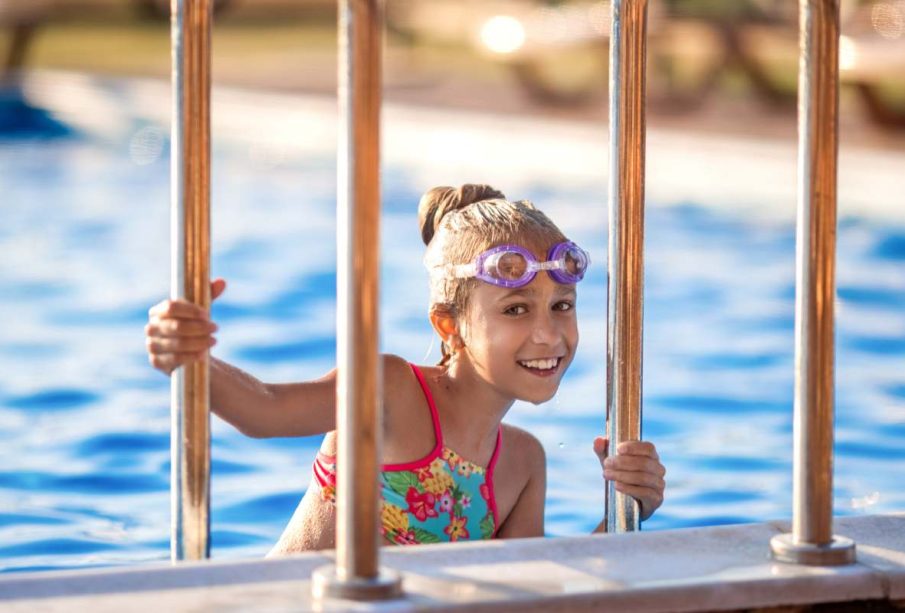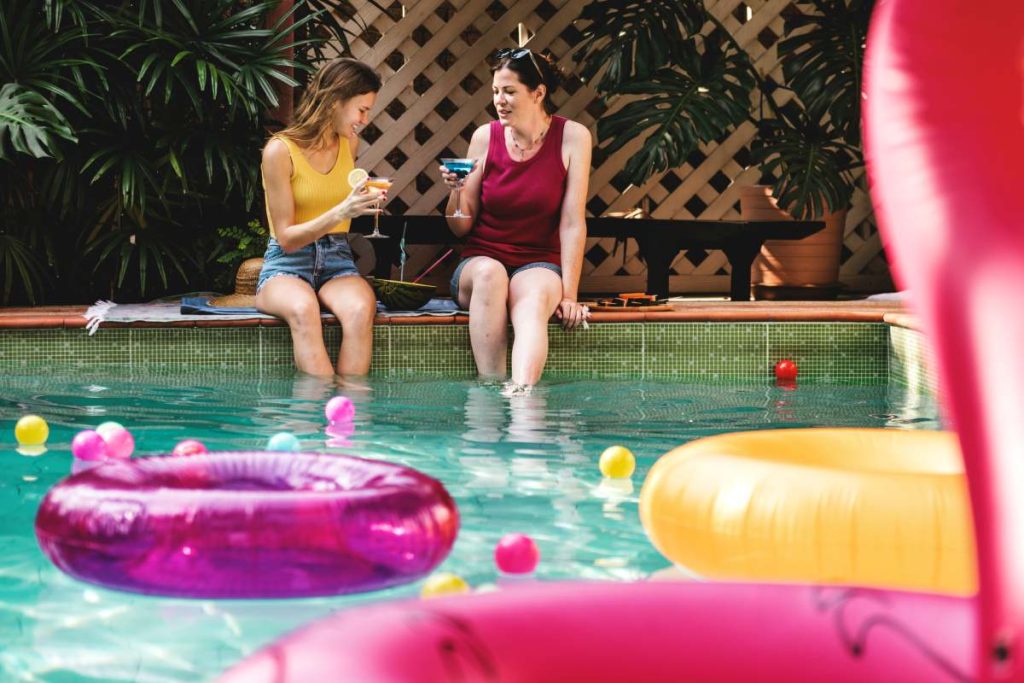9 Essential Swimming Pool Safety Tips For Children

Enjoying your backyard pool with family and friends is a great way to make lasting summer memories. However, it’s crucial to maintain a safe environment, especially for young swimmers, to prevent accidents and tragedies.
Drowning can happen quickly, often in just a minute, according to the American Academy of Pediatrics. The Centers for Disease Control reports that drowning is the leading cause of death for children aged one to four and the second leading cause of unintentional injury-related death for children aged five to 14, surpassed only by motor vehicle accidents.
Surprisingly, adult supervision alone isn’t always enough. The National Drowning Prevention Alliance (NDPA) found that 88% of child drownings occur in the presence of at least one adult. Additionally, nearly one in four child drownings happen during family gatherings near a pool. Alarmingly, 70% of drownings occur during non-swim times when adults assume the pool is not in use.
To ensure your backyard pool is a safe place for everyone, especially children, here are 9 essential swimming pool safety tips.
1. Install a Pool Fence
A sturdy pool fence is one of the most effective ways to prevent unsupervised access to the swimming pool. Here’s what to consider:
- Height and Design: The fence should be at least four feet high, with vertical slats no more than four inches apart to prevent children from squeezing through. A self-closing and self-latching gate that opens outward is crucial, and the latch should be out of a child’s reach.
- Material: Choose a durable material like metal or mesh that is difficult for children to climb. Some fences are designed with smooth surfaces to prevent footholds.
- Placement: Ensure the fence completely encloses the pool, including the area around any steps, ladders, or other access points. There should be no gaps between the ground and the bottom of the fence.
2. Use Pool Alarms
Pool alarms are an excellent additional layer of security. Here’s how they can help:
- Gate Alarms: Attach alarms to the pool gate. These alarms sound when the gate is opened, alerting you if a child tries to access the pool area.
- Surface Alarms: These alarms float on the surface of the pool and detect water movement. If something or someone falls into the pool, the alarm will sound.
- Wearable Alarms: These are designed for children to wear as bracelets or anklets. If the child enters the water, the alarm is triggered, alerting you immediately.

3. Supervision and Safety Measures
No matter how many safety devices you have, active supervision is irreplaceable. Here’s what you can do:
- Constant Vigilance: Always keep an eye on children when they are near the pool. Designate a “water watcher” when you have guests, so someone is always responsible for supervising the pool area.
- Teach Swimming and Water Safety: Enroll your children in swimming lessons as early as possible. Teach them basic water safety rules, such as never swimming alone or running near the pool.
- CPR Training: Parents and caregivers should be trained in CPR. In case of an emergency, knowing how to perform CPR can save a child’s life while waiting for emergency responders to arrive.
4. Use a Pool Cover
A pool cover can serve as a strong barrier between your child and the water when the pool is not in use. Here are some important aspects to consider:
- Safety Covers: Invest in a high-quality, rigid safety cover designed to support the weight of a child or pet. These covers are securely anchored to the pool deck and can prevent accidental falls into the pool.
- Automatic Covers: These covers can be easily rolled out or retracted with the push of a button, making them convenient for everyday use. Ensure the cover completely covers the pool and is free of gaps where a child could slip through.
- Maintenance: Regularly check and maintain the pool cover to ensure it remains in good condition. Clean off debris, such as leaves and branches, that may collect on the cover to prevent damage.
5. Secure Pool Equipment and Toys
Pool equipment and toys can be enticing to children, leading them to the pool area unsupervised. Here’s how to manage these items safely:
- Store Toys Away: After pool time, remove all toys, floats, and other objects from the pool area and store them out of sight. Children might be tempted to retrieve these items, increasing the risk of falling into the pool.
- Lock Pool Equipment: Keep pool chemicals, cleaning equipment, and other maintenance items in a locked storage area. Chemicals can be hazardous if ingested or improperly handled, and equipment can pose a tripping hazard.
- Pool Covers for Equipment: Use pool covers for pool pumps, filters, and other equipment to prevent children from tampering with them. Ensure these covers are secure and difficult for children to remove.

6. Educate and Empower Your Children
Teaching your children about pool safety is a crucial part of childproofing. Empower them with knowledge and skills to stay safe around water:
- Water Safety Rules: Establish and enforce clear water safety rules. Teach your children never to go near the pool without an adult, not to run around the pool area, and to always ask for permission before swimming.
- Swimming Skills: Enroll your children in swimming lessons appropriate for their age and skill level. The earlier they learn to swim and understand water safety, the better prepared they will be.
- Emergency Procedures: Educate your children about what to do in an emergency, such as calling for help, knowing how to get out of the pool safely, and recognizing the signs of drowning in others.
7. Install Pool Safety Nets
Pool safety nets are another effective barrier to prevent accidental falls into the pool. Here’s how they can help:
- Custom-Fitted Nets: Pool safety nets are designed to fit snugly over your pool, creating a secure barrier that prevents children from falling into the water. They can support the weight of a child and are difficult to remove without adult assistance.
- Ease of Use: These nets are relatively easy to install and remove, making them a convenient option for daily use. They can be stored compactly when not in use.
- Visibility: Unlike pool covers, safety nets allow you to see the water, making it easier to monitor the pool’s condition and ensure it’s free of debris when the net is in place.
8. Implement Pool Safety Rules
Establishing and enforcing pool safety rules can significantly reduce the risk of accidents. Here are some key rules to consider:
- No Running: Emphasize that running around the pool area is dangerous due to the slippery surfaces that can cause falls.
- No Diving in Shallow Water: Make it clear that diving should only occur in designated areas where the water is deep enough to prevent injuries.
- Buddy System: Encourage children to use the buddy system when swimming. They should never swim alone and should always have a buddy or adult present.
- No Rough Play: Prohibit rough play, such as pushing or dunking, which can lead to accidents or drowning.
9. Have Safety Equipment Accessible
Having the right safety equipment readily available can be crucial in an emergency. Here are some items to keep near the pool:
- Life Rings and Floatation Devices: Keep life rings, floatation devices, and a reaching pole near the pool. These can be used to assist someone who is struggling in the water.
- First Aid Kit: Have a well-stocked first aid kit nearby to address minor injuries quickly.
- Emergency Phone: Ensure there is a phone nearby that can be used to call for help in case of an emergency. Program important numbers, such as emergency services, into the phone for quick access.

Should I Enrol My Child in Swimming Lessons?
Learning to swim is a crucial life skill. Both the AAP and The American Red Cross advise that every family member learns to swim to enhance water safety.
While children may begin enjoying the pool and gaining comfort in the water as babies, they typically start mastering swimming skills around age 4, and can develop more advanced abilities by age 5 or 6.
Select a program led by experienced, certified instructors, and consider observing a class beforehand to determine if it suits your child well.
So, if you’re not ready to hire a professional renovation company to renovate your pool, you should try to enrol your child in a swimming lesson instead.










